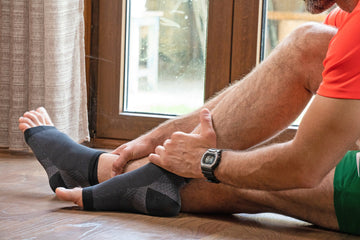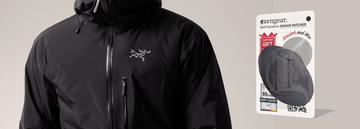The Most Common Causes of Ankle Sprains: Relief Tips
by Emily Jannet on Aug 17, 2024
Ankle sprains are among the most common injuries, affecting athletes, active individuals, and even those engaged in everyday activities. The injury typically occurs when the ligaments that support the ankle stretch beyond their limits and tear. Understanding the causes of ankle sprains and how to effectively manage ankle pain, including the use of ankle sleeves, is crucial for prevention and recovery.
Common Causes of Ankle Sprains
Sudden Twisting Movements
A rapid change in direction or a sudden twist can cause the foot to roll inward or outward, overstretching the ligaments. This is often seen in sports such as basketball, soccer, and tennis, where quick lateral movements are frequent.
Uneven Surfaces
Walking or running on uneven surfaces increases the risk of ankle sprains. Trails with rocks, holes, or uneven pavements can cause the foot to land awkwardly, leading to a twist or turn that injures the ligaments.
Improper Footwear
Wearing shoes that do not provide adequate support or are inappropriate for the activity can lead to ankle instability. High heels, for instance, can easily cause the ankle to roll, while athletic shoes that lack proper grip and support can increase the risk during physical activities.
Weak or Imbalanced Muscles
Muscles around the ankle and foot provide essential support for the joint. If these muscles are weak or imbalanced, the ankle is more susceptible to sprains. This weakness can result from inactivity, improper training, or a lack of strength and conditioning exercises.
Previous Injuries
A history of ankle sprains can make the joint more vulnerable to future injuries. Ligaments that have been previously stretched or torn may not heal correctly, leading to chronic instability and a higher risk of recurrent sprains.
Overuse
Repetitive stress on the ankle, common in long-distance running and other endurance sports, can weaken the ligaments over time. Overuse injuries often result from not allowing enough recovery time between intense activities.
Relieving Ankle Pain with Ankle Sleeves
Ankle sleeves, also known as ankle braces or supports, are designed to provide compression, support, and stabilization to the ankle joint. They are widely used in both the prevention and treatment of ankle sprains. Here’s how ankle sleeves can help relieve ankle pain and aid in recovery:
Compression
Ankle sleeves apply gentle, consistent pressure to the ankle, which can help reduce swelling and inflammation. Compression increases blood flow to the area, promoting faster healing by delivering oxygen and nutrients to damaged tissues. Additionally, it helps in the removal of metabolic waste products from the site of injury.
Support and Stabilisation
Ankle sleeves provide external support to the joint, helping to stabilize it and prevent further injury. This is particularly beneficial for individuals with weak or previously injured ankles, as the additional support can prevent excessive movement that could lead to another sprain.
Pain Reduction
The compression and support provided by ankle sleeves can significantly reduce pain. By limiting the range of motion and preventing movements that exacerbate the injury, ankle sleeves help alleviate discomfort and allow the individual to move more comfortably.
Enhanced Proprioception
Proprioception refers to the body’s ability to sense its position in space. Ankle sleeves enhance proprioceptive feedback, which can help improve balance and coordination. This is especially important during rehabilitation, as improved proprioception aids in regaining full function of the ankle and reducing the risk of future sprains.
Versatility and Convenience
Ankle sleeves are versatile and can be worn during various activities, including sports, daily tasks, and even while sleeping to provide continuous support. They are typically made from breathable, lightweight materials, ensuring comfort during extended use. The ease of putting on and taking off ankle sleeves makes them a convenient option for anyone seeking immediate relief from ankle pain.
Choosing the Right Ankle Sleeve
When selecting an ankle sleeve, it’s important to consider the following factors:
- Level of Support: Different ankle sleeves offer varying levels of support, from mild compression for minor sprains to rigid braces for severe injuries. Choose one that matches the severity of your condition and the activity level you plan to engage in.
- Material: Look for breathable, moisture-wicking materials that provide comfort and prevent skin irritation. Neoprene and elastic fabrics are commonly used in high-quality ankle sleeves.
- Fit and Size: A proper fit is crucial for effective support and comfort. Measure your ankle and follow the manufacturer’s sizing guidelines to ensure you choose the correct size.
- Ease of Use: Consider how easy it is to put on and take off the ankle sleeve, especially if you plan to use it frequently or during activities.
Ankle sprains are a common yet preventable injury often resulting from sudden movements, uneven surfaces, improper footwear, weak muscles, previous injuries, and overuse. Understanding these causes can help individuals take preventive measures. In case of an injury, ankle sleeves offer an effective way to manage pain and facilitate recovery through compression, support, and enhanced proprioception. By choosing the right ankle sleeve and incorporating it into your recovery routine, you can reduce pain, prevent further injury, and get back to your activities with confidence.





